
The Water of Leith is the main river flowing through Edinburgh, Scotland, to the port of Leith where it flows into the sea via the Firth of Forth.

Kew Bridge is a Grade II listed bridge over the River Thames in the London Borough of Richmond upon Thames and the London Borough of Hounslow. The present bridge, which was opened in 1903 as King Edward VII Bridge by King Edward VII and Queen Alexandra, was designed by John Wolfe-Barry and Cuthbert A Brereton. It was given Grade II listed structure protection in 1983.
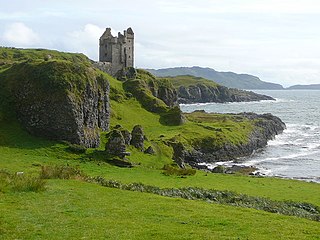
Kerrera is an island in the Scottish Inner Hebrides, close to the town of Oban. In 2016 it had a population of 45 divided into two communities in the north and south of the island.

Sir Nicholas Andrew Serota, is an art historian and curator, who served as the Director of the Tate from 1988 to 2017. He is currently Chair of Arts Council England, a role which he has held since February 2017.

Edinburgh North and Leith is a constituency of the House of Commons of the Parliament of the United Kingdom, first used in the 1997 general election. It elects one Member of Parliament (MP) by the first past the post system of election.
Edinburgh was a burgh constituency of the House of Commons of the Parliament of Great Britain from 1708 to 1801 and of the Parliament of the United Kingdom from 1801 until 1885. Originally a single member constituency, representation was increased to two members in 1832. It was abolished in 1885, being split into Edinburgh Central, Edinburgh South, Edinburgh East and Edinburgh West.
Leith Academy is a state school in Leith, Edinburgh. It currently educates around 900 pupils and around 2,800 part-time adult learners. Mike Irving has been acting head teacher since August 2017.

Bonnington is a district of Edinburgh, the capital of Scotland. The area centres upon an original village which grew up around a ford on the Water of Leith on the old boundary between Edinburgh and the port of Leith. Before the creation of Leith Walk the road via the villages of Broughton and Bonnington, or Wester Road as it appears on some old maps, was one of two roads formerly connecting Edinburgh to Leith; the other being Easter Road. The district lies between the districts of Pilrig and Newhaven.
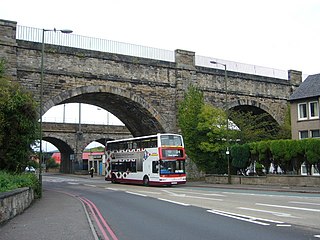
Slateford is a suburb of Edinburgh, the capital of Scotland. It is east of the Water of Leith.
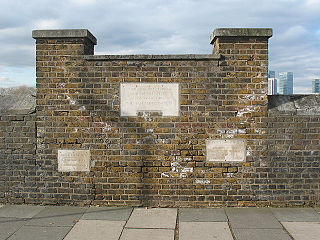
The 1928 Thames flood was a disastrous flood of the River Thames that affected much of riverside London on 7 January 1928, as well as places further downriver. Fourteen people died and thousands were made homeless when flood waters poured over the top of the Thames Embankment and part of the Chelsea Embankment collapsed. It was the last major flood to affect central London, and, along with the disastrous North Sea flood of 1953, helped lead to the implementation of new flood-control measures that culminated in the construction of the Thames Barrier in the 1970s.

Leith Central Railway Station was a railway station in Leith, Scotland. It formed the terminus of a North British Railway branch line from Edinburgh Waverley. The station was built on a large scale, and it included a trainshed over the platforms.
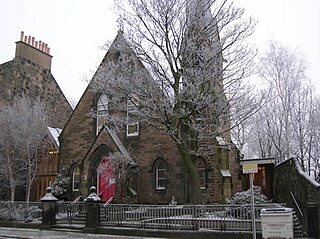
Leith School of Art (LSA) is an independent art college in Edinburgh, Scotland, providing tertiary education in art and design. LSA is located in the Leith area of Edinburgh, in the former converted Norwegian Seamen's Church, originally built by Scottish architect James Simpson and Danish architect Johan Schroder in 1868.

Tate Britain is an art museum on Millbank in the City of Westminster in London. It is part of the Tate network of galleries in England, with Tate Modern, Tate Liverpool and Tate St Ives. It is the oldest gallery in the network, having opened in 1897. It houses a substantial collection of the art of the United Kingdom since Tudor times, and in particular has large holdings of the works of J. M. W. Turner, who bequeathed all his own collection to the nation. It is one of the largest museums in the country.
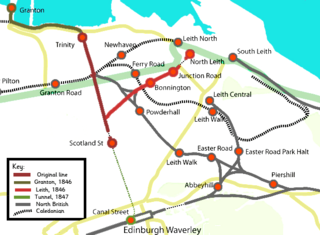
The Edinburgh, Leith and Newhaven Railway was a railway company formed in 1836 to connect the city of Edinburgh with the harbours on the Firth of Forth. When the line connected to Granton, the company name was changed to the Edinburgh, Leith and Granton Railway. It opened part of its route in 1846, but reaching the centre of Edinburgh involved the difficult construction of a long tunnel; this was opened in 1847. It was on a steep incline and was worked by rope haulage.

Leith Library is one of Edinburgh's 28 freely-accessible libraries. It is a category B listed building. located in Leith, in the northern part of the city, at the foot of Ferry Road shortly before it meets Great Junction Street and North Great Junction Street.

Sandycombe Lodge is a Grade II* listed house at 40 Sandycoombe Road, Twickenham, in the London Borough of Richmond upon Thames. In the picturesque-cottage style, it was designed and built in 1813 by the artist J. M. W. Turner (1775–1851) as his country retreat and as a home for his father William (1745–1829). Turner lived there from 1814 to 1826. Originally known as Solus Lodge, it is the only surviving building designed by Turner, and shows the influence of his friend Sir John Soane. The appearance of the house had been much altered by the addition of second floors to the original side wings.

Snow Storm, or Snow Storm: Steam-Boat off a Harbour's Mouth, is a painting by English artist Joseph Mallord William Turner (1775–1851) from 1842.
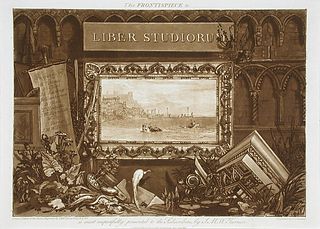
Liber Studiorum is a collection of prints by J. M. W. Turner. The collected works included seventy-one prints that he worked on and printed from 1807 to 1819. For the production of the prints, Turner created the etchings for the prints, which were worked in mezzotint by his collaborating engravers.

St Catherine's Hill is a hill south of Guildford in Surrey, England, with a ruined chapel on its top.






















